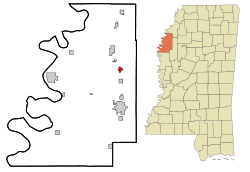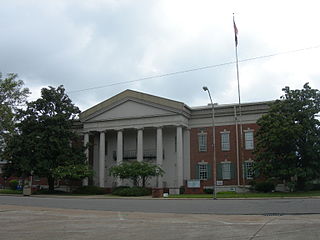
Sunflower County is a county located in the U.S. state of Mississippi. As of the 2020 census, the population was 25,971. Its largest city and county seat is Indianola.

Issaquena County is a county located in the U.S. state of Mississippi. As of the 2020 Census, its population was 1,338, making it the least populous county in the United States east of the Mississippi River. Its county seat is Mayersville. With a per-capita income of $24,489, Issaquena County is, by that measure, the third-poorest county in the United States and the lowest without a prison depleting the numbers.

Coahoma County is a county located in the U.S. state of Mississippi. As of the 2020 census, the population was 21,390. Its county seat is Clarksdale.

Bolivar County is a county located on the western border of the U.S. state of Mississippi. As of the 2020 census, the population was 30,985. Its county seats are Rosedale and Cleveland. The county is named in honor of Simón Bolívar, early 19th-century leader of the liberation of several South American territories from Spain.
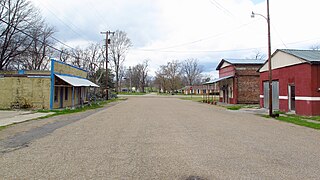
Beulah is a town in Bolivar County, Mississippi, United States. Per the 2020 census, the population was 242.
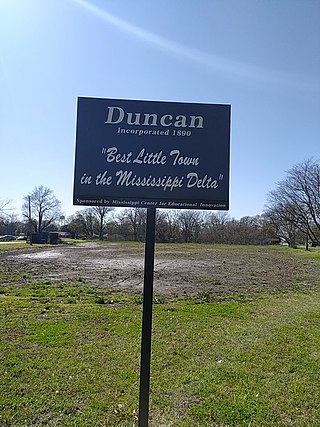
Duncan is a town in Bolivar County, Mississippi, United States. Per the 2020 census, the population was 276.

Shelby is a city in Bolivar County, Mississippi, United States. The population was 2,229 at the 2010 census, down from 2,926 in 2000. The town of Shelby was established in 1853 by Tom Shelby, who had purchased a block of land there from the federal government.

Winstonville is a town in Bolivar County, Mississippi, United States. Per the 2020 census, the population was 153.

Clarksdale is a city in and the county seat of Coahoma County, Mississippi, United States. It is located along the Sunflower River. Clarksdale is named after John Clark, a settler who founded the city in the mid-19th century when he established a timber mill and business. Clarksdale is in the Mississippi Delta region and is an agricultural and trading center. Many African-American musicians developed the blues here, and took this original American music with them to Chicago and other northern cities during the Great Migration.
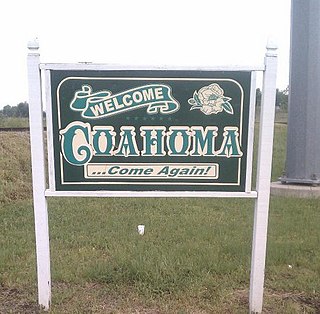
Coahoma is a town in Coahoma County, Mississippi, United States. Per the 2020 census, the population was 229.

Glendora is a village in Tallahatchie County, Mississippi. The population was 285 at the 2000 census.
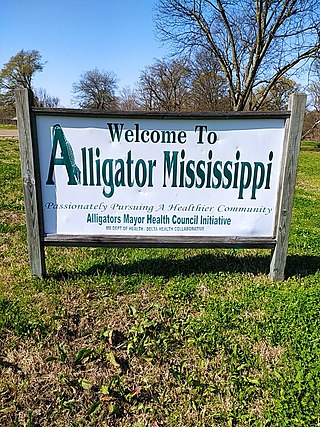
Alligator is a town in Bolivar County, Mississippi, United States. Per the 2020 Census, the population was 116.

Cleveland is a city in Bolivar County, Mississippi, United States. The population was 11,199 as of the 2020 United States Census.

Jonestown is a town in Coahoma County, Mississippi, United States. Per the 2020 census, the population was 962.

Isaiah Thornton Montgomery was the founder of Mound Bayou, Mississippi, an all-black community. A Republican, he was a delegate to the 1890 Mississippi Constitutional Convention and served as mayor of Mound Bayou.
The Regional Council of Negro Leadership (RCNL) was a society in Mississippi founded by T. R. M. Howard in 1951 to promote a program of civil rights, self-help, and business ownership for African Americans. It pledged "to guide our people in their civic responsibilities regarding education, registration and voting, law enforcement, tax paying, the preservation of property, the value of saving and in all things which will make us stable, qualified conscientious citizens." Instead of starting from the "grass roots," however, the strategy was to "reach the masses through their chosen leaders" by harnessing the talents of blacks with a proven record in business, the professions, education, and the church.
The North Bolivar Consolidated School District, formerly the North Bolivar School District is a public school district located in northern Bolivar County in the state of Mississippi. It is headquartered in Mound Bayou with an office in Shelby.
The Mound Bayou Public School District was a public school district with its headquarters in Mound Bayou, Mississippi (USA).

Dublin, also known as Hopson Bayou, is a census-designated place and unincorporated community located along U.S. Route 49 in southeastern Coahoma County, Mississippi, United States. Dublin is located on the Mississippi Delta Railroad. Dublin has a ZIP code of 38739. A post office first began operation under the name Dublin in 1875.
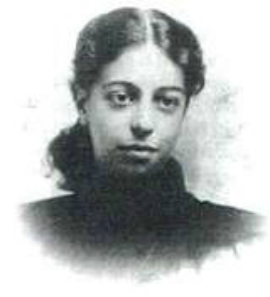
Mary Cordelia Montgomery Booze was an American political organizer and activist. The daughter of former slaves, she was one of the first African-American women to sit on the Republican National Committee. From 1924 until her death, she was the national committeewoman for her native state of Mississippi.

